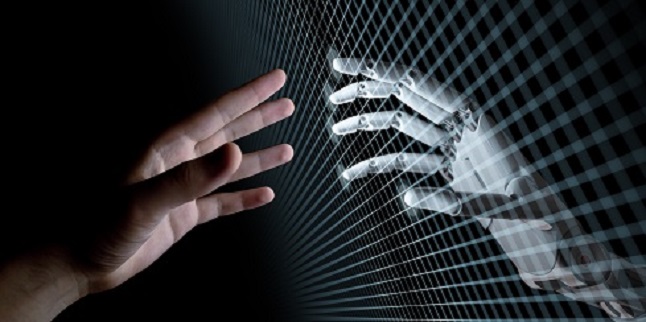AI Has an Image Problem and That’s Not Fair

It’s a funny thing about people — we love huge technological innovations, but we also tend to fear them.
For example, when trains became popular in the mid-19th
century and enabled travelers to move about faster and easier than ever, some claimed
the speed, noise, and jarring motions could drive passengers insane. Also, when telephones first became available to the public and revolutionized communication in the early 20th
century, people worried they were an electrocution threat. Others wondered if they’d make people lazier and damage social connections. (We now have social media for that – just kidding.)
The latest object of our technophobia? Artificial intelligence.
Some people call it AI anxiety — a dread that machines will eliminate jobs and the need for human workers — and possibly end up taking over the world altogether. Will we look back one day and shake our heads that AI evoked such wildly overwrought concerns? It’s a good bet that yes.
First of all, it’s important to understand that the direst visions of an AI future are based on concepts that don’t exist today (and very well may never). Our fears are based on the hypothetical notion of artificial general intelligence (AGI) and a world straight out of science fiction where machines can replicate human thinking.
The problem is that in reality, today’s AI is still quite narrow, and its applications are limited to completing certain types of tasks. Most AI in use today relies on machine learning to find patterns in enormous amounts of data, make predictions and automate actions based on those predictions. The scariest part of AI today is unintended bias — and we’re working on that.
Another thing that often gets lost in the technophobia? We already use AI every day and we really like it. Each time your email app detects and trashes spam, or Netflix recommends just the right movie, AI recommendation engines played an important role.
But what about AI’s impact on the workforce? Should we be afraid that machines are coming for our jobs?
The answer is no.
Studies show that AI is proving to be more of a force multiplier to the workforce rather than a replacement. In fact, many experts predict that more jobs will be created by AI than displaced. In its “Future of Jobs Report 2020,” for example, the World Economic Forum estimated that 85 million jobs will be displaced while 97 million new jobs will be created across 26 countries by 2025.
The bottom line is that AI and humans naturally complement each other, and it only makes sense to view AI as a new type of assistive technology. AI is better equipped for performing mundane tasks faster and more accurately than a human being ever could. As a Deloitte report
put it, “Human workers and AI will augment each other, changing the nature of work for the better.”
So why are people so afraid of AI, when it’s just a tool that can perform some types of tasks quickly and accurately while freeing humans up to do more interesting types of work?
AI has an image problem. For too many years, it’s been closely associated with science fiction. So how do we make sure then when someone talks about AI, the listener thinks about narrow AI and machine learning models instead of Sci-Fi?
I propose that those of us who work in, analyze, and write about enterprise tech simply refrain from talking about AI as a magical destination unto itself. We all have the responsibility to fix AI’s image problem by educating the people we interact with that AI is not synonymous with science fiction and we have nothing to fear from this new type of assistive technology.






